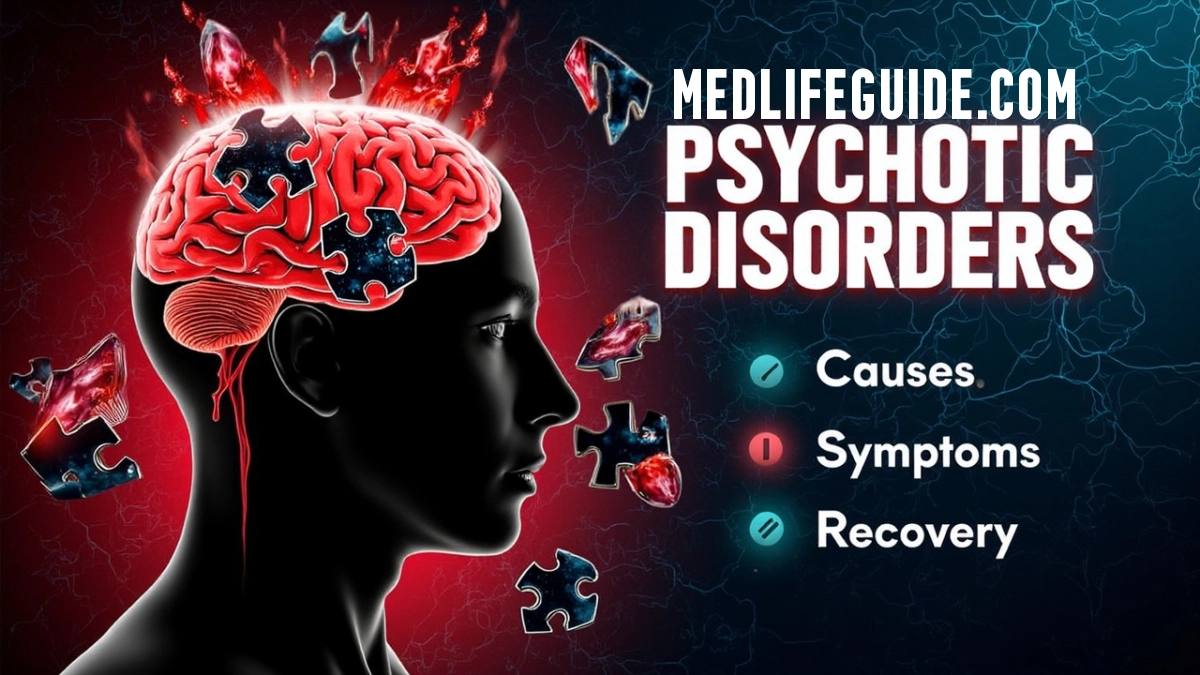Psychotic disorders are among the most misunderstood mental health conditions, often shrouded in stigma and fear. These disorders alter a person’s perception of reality, leading to hallucinations, delusions, and disorganized thinking. But what truly causes them? How can they be treated? And—most importantly—is recovery possible?
This article dives deep into the world of psychotic disorders, separating myths from facts and offering actionable insights for patients, caregivers, and mental health advocates.
What Are Psychotic Disorders?
Example: A young adult starts hearing voices that others don’t hear. They begin to pull away from friends because the world feels unreal.
Psychotic disorders are severe mental health conditions characterized by a loss of contact with reality. The most well-known is schizophrenia, but the spectrum also includes:
- Schizoaffective Disorder (mood disorder + psychosis)
- Brief Psychotic Disorder (short-term episodes)
- Delusional Disorder (fixed false beliefs)
- Substance-Induced Psychosis (triggered by drugs/alcohol)
Psychosis itself is a symptom, not a diagnosis—meaning it can appear in bipolar disorder, severe depression, or even neurological conditions like Parkinson’s.
Symptoms: Recognizing the Signs
Example: A person believes a neighbor is spying on them. They also struggle to follow basic conversations.
Psychotic disorders manifest in three core symptoms:
1. Hallucinations
Example: Someone hears a voice calling their name when they are alone. They see shadows moving that no one else notices.
- Hearing voices (auditory hallucinations)
- Seeing things that aren’t there (visual hallucinations)
- Feeling sensations like bugs crawling on skin (tactile hallucinations)
2. Delusions
Example: A person thinks they are being tracked through their phone. Another believes they have a special mission from a famous figure.
- Paranoid delusions (believing someone is plotting against them)
- Grandiose delusions (thinking they have superhuman abilities)
- Somatic delusions (false beliefs about body functions)
3. Disorganized Thinking & Speech
Example: A student jumps from one idea to another without a link. Their words come out in a way that is hard to follow.
- Incoherent sentences (word salad)
- Rapidly jumping between unrelated topics
- Difficulty concentrating or following conversations
Early Warning Signs:
- Social withdrawal
- Sudden decline in personal hygiene
- Unusual emotional reactions (laughing at sad events)
What Causes Psychotic Disorders?
Research suggests a combination of factors:
1. Biological Factors
Example: A teen with a parent who has schizophrenia begins to show early signs. A brain scan later shows reduced gray matter.
- Genetics: Family history increases risk.
- Brain Chemistry: Imbalances in dopamine and glutamate.
- Brain Structure: Enlarged ventricles or reduced gray matter.
2. Environmental Triggers
Example: A child who faced long-term neglect develops symptoms in adulthood. A stressful breakup triggers their first psychotic episode.
- Childhood trauma (abuse, neglect)
- Viral infections during pregnancy
- High-stress events (loss of a loved one, major life changes)
3. Substance Use
Example: A person sees vivid hallucinations after using meth. Another experiences paranoia after months of heavy cannabis.
- Methamphetamines, LSD, and heavy cannabis use can trigger psychosis.
- Alcohol withdrawal may also induce hallucinations.
Diagnosis & Treatment: Pathways to Recovery
Diagnosis Process
Example: A psychiatrist conducts a full evaluation and orders imaging. The results confirm psychosis isn’t caused by a physical illness.
- Psychiatric evaluation (ruling out medical causes like brain tumors)
- DSM-5 criteria (symptoms lasting ≥6 months for schizophrenia)
- Blood tests & brain imaging (to exclude other conditions)
Treatment Options
Example: Antipsychotics reduce voices within weeks. Therapy helps the person understand and manage lingering beliefs.
- Antipsychotic Medications
- First-gen (Haldol) vs. second-gen (Risperdal, Abilify)
- Side effects: Weight gain, tremors, sedation
- Psychotherapy
- Cognitive Behavioral Therapy (CBT) for delusions
- Family therapy to improve support systems
- Lifestyle & Social Support
- Structured routines to reduce stress
- Peer support groups (e.g., NAMI)
Recovery Is Possible:
- Many people with psychotic disorders lead fulfilling lives with treatment.
- Early intervention improves long-term outcomes.
Debunking Myths About Psychotic Disorders
- Myth: “People with psychosis are violent.”
- Fact: They’re more likely to be victims than perpetrators.
- Myth: “Psychosis means split personality.”
- Fact: That’s dissociative identity disorder, not schizophrenia.
Actionable Takeaways
- Seek help early—don’t wait for symptoms to worsen.
- Educate yourself & others to reduce stigma.
- Support, don’t judge—compassion aids recovery.
Final Thoughts
Psychotic disorders are complex but treatable. With the right medical care, therapy, and social support, individuals can regain stability and hope. If you or someone you know is struggling, reach out to a mental health professional today.

